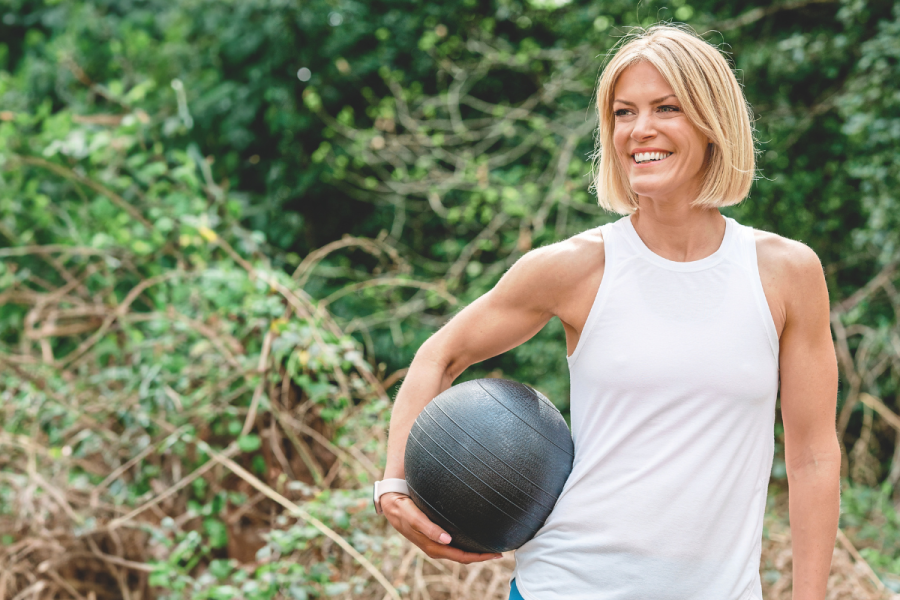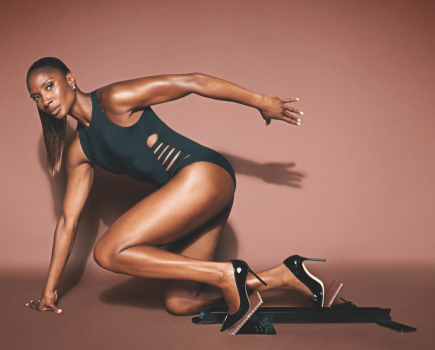Muscle mass declines sharply after menopause, so maintaining and building muscle is crucial. Personal trainer Emma Simarro shares a weight workout ideal for your menopausal years.
Words and images: Emma Simarro.
Strength training is an essential part of your midlife health toolkit. It helps maintain muscle and strength, supports healthy bones, and reduces the likelihood of diabetes, heart disease, and high blood pressure. It can reduce menopause symptoms, such as joint pain, low mood, anxiety, and weight gain. Full-body strength workouts are ideal and achievable.
So, which size weights to use? A good test is that you shouldn’t be able to speak through the last reps—that means it’s difficult enough for you. Generally speaking, women use lighter weights for upper body exercises (shoulders and arms), moderate weights for chest or back, and heavier weights for the lower body. But what is challenging for one woman may feel easy for another.
The goal of your workouts is to future-proof your body. Think of it as your physical pension pot. The more you put in now, the more you’ll get out later.
- Warm up with 8-12 reps of each exercise without any weights.
- The routine takes 20-30 minutes.
- Repeat 1-2 times a week for 4-6 weeks for a huge difference in how you look and feel!
Exercises
Bulgarian split squat
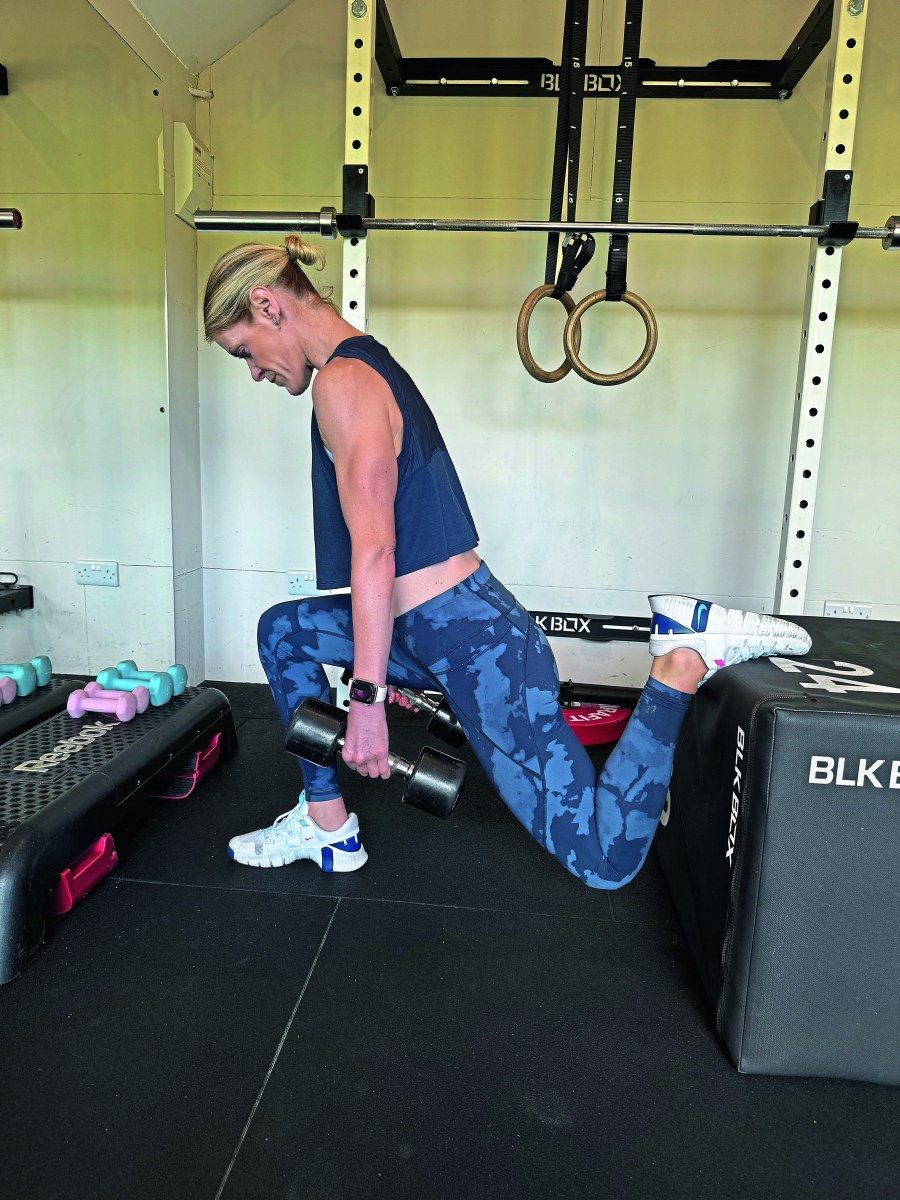
3 sets of 8-10 reps on each side
Start seated on a bench and extend one leg out straight in front of you; this gives you a guide to where your front foot should be. Stand up and put your back foot down onto the bench, laces down. Holding the dumbbells by your sides, hinge forward at the hips slightly and lower your back knee towards the floor. As you do this, allow your front knee to travel forward towards your toes.
At the bottom of the split squat, hold for a second before driving down through your front foot and standing back up. As these are so hard, you may want to start without dumbbells – trust me, you’ll feel it!
TOP MOVE!
This is a fantastic lower body exercise targeting glutes, quads, hamstrings, adductors, and calves, as well as your core. It helps rebalance strength differences across your limbs and improves balance and coordination.
Single arm row
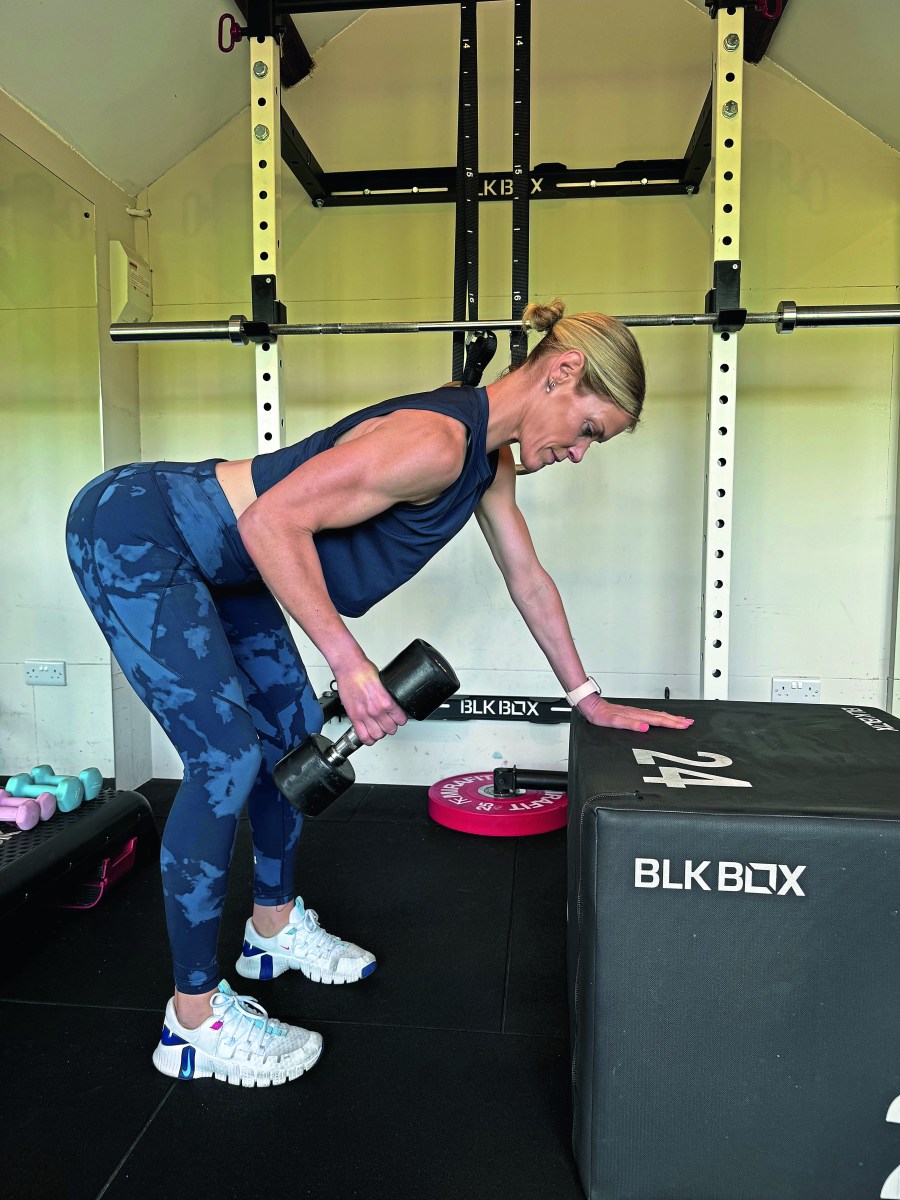
3 sets of 10-12 reps on each side
This works your upper back muscles, biceps, and core. Stand with one knee on a bench or in a bent-over position, using one hand for support on the bench. Bend forward at the hips, engaging your core and keeping your hips neutral. Holding one dumbbell in front of you, pull back through the elbow bringing it back towards your hip until your elbow is at 90 degrees.
Be sure not to “shrug” the dumbbell back; keep the weight manageable to control the movement. Once at the top, slowly lower before repeating 10-12 reps and switching to the other arm.
Step up
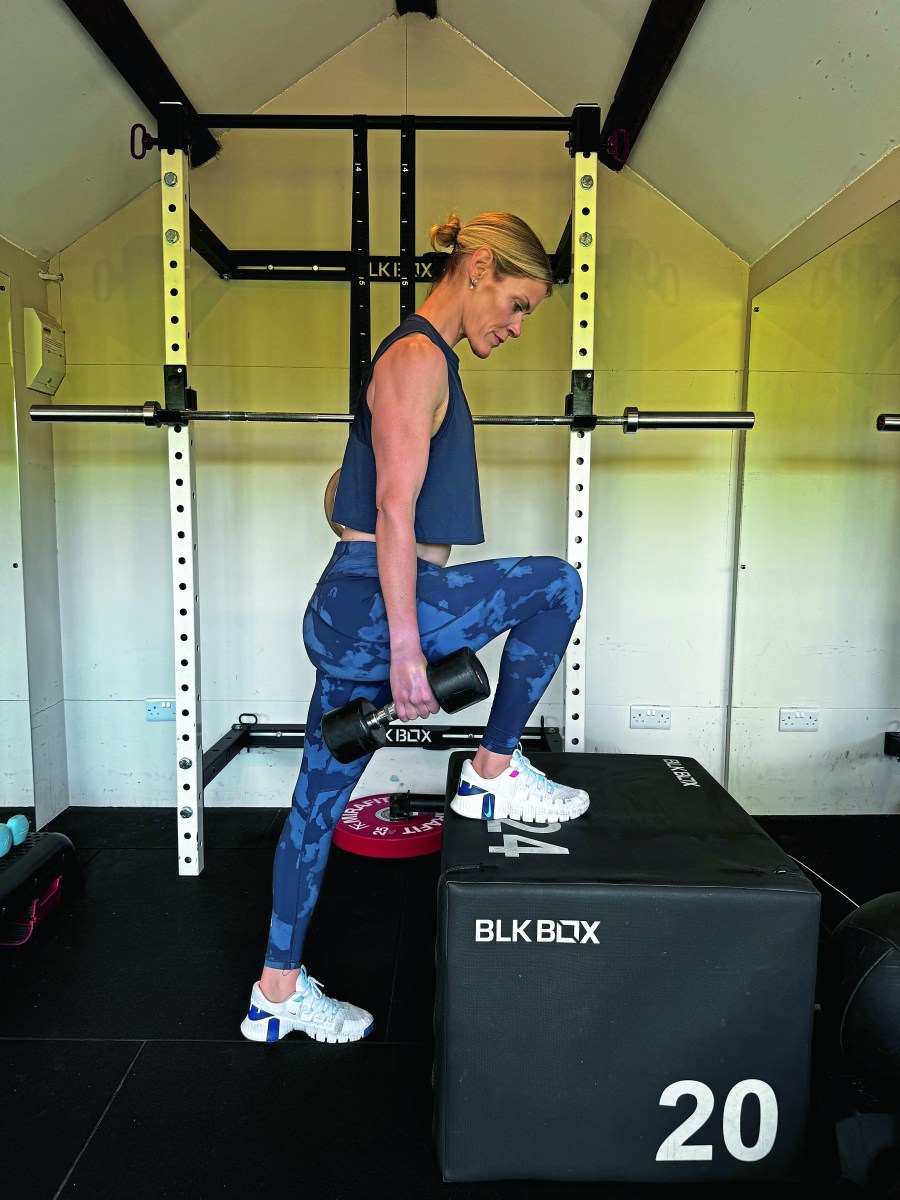
3 sets of 8-10 reps
Put one foot onto a bench, keeping your standing foot close to the bench on the floor. With two dumbbells by your side, drive down through your raised foot and step up onto the bench. Your standing leg should be fully extended before the other foot lands. Slowly lower your foot back down to the floor before repeating. Keep your foot up on the bench throughout before switching sides.
TOP MOVE!
A step-up is one of my favourite lower body exercises, no matter how hard they are. They work your glutes, hamstrings, quads, adductors, calves, and hip flexors. They definitely pack a punch!
Chest fly
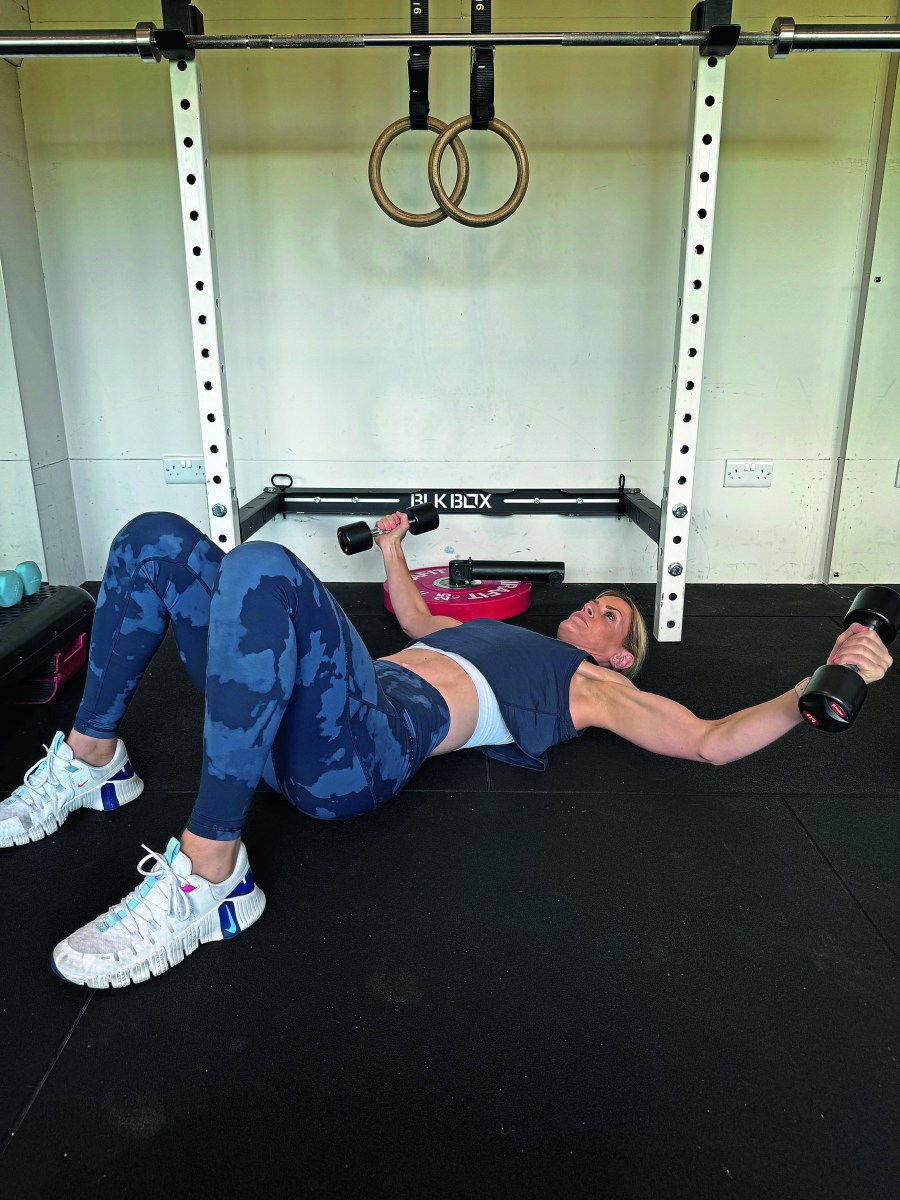
3 sets of 8-10 reps
Lying on your back with dumbbells in hand, extend your arms up in front of your chest, palms facing each other. Take a deep breath and slowly lower the dumbbells out to the floor, keeping your arms long and elbows slightly bent. Once your upper arm touches the floor (the dumbbells will sit just above it), squeeze your chest and push the dumbbells back together, as if you’re giving someone a big bear hug!
It is important to keep your arms long and control the tempo of the move.
TIP!
Chest fly is a great alternative to a floor press. It is more isolated on your chest muscles but also works shoulders, triceps, and biceps.
Shoulder taps
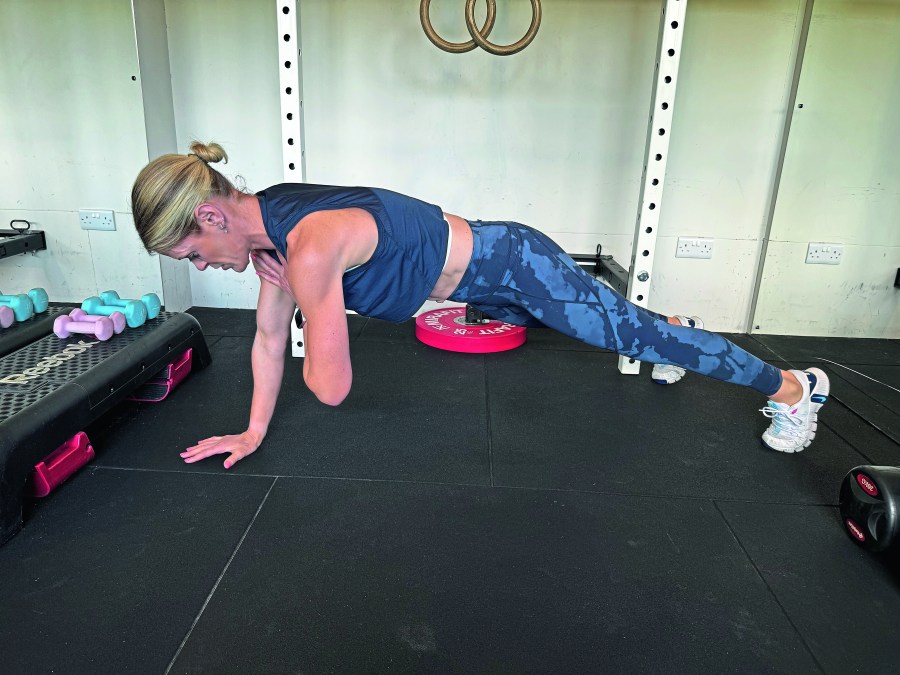
3 sets of 12-20 reps
Hold a tall plank position on the palms of your hands and take your feet a little wider than hip-width to increase your stability. Draw your shoulders down away from your ears and “zip-up” your core by gently lifting your hips. Slowly lift one hand off the floor to tap the opposite shoulder. Resist the temptation to shift your hips by engaging your glutes.
Lower your hand back to the floor and repeat on the other side. You can modify this exercise by coming into a kneeling plank to make it easier.
Bent over fly
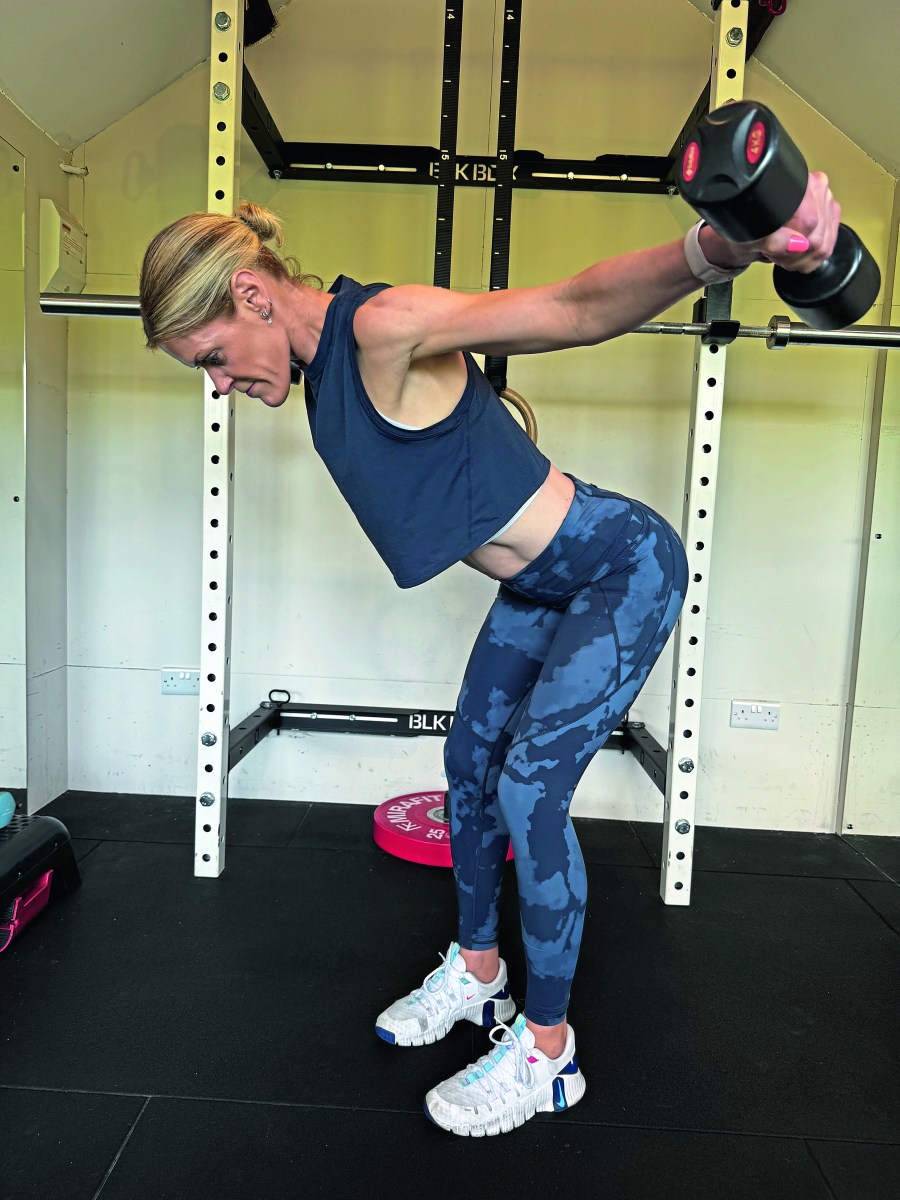
3 sets of 8-10 reps
Start standing and hinge forward at the hips, pushing your bottom back and up towards the ceiling behind you. Pull your shoulders down from your ears and hold your dumbbells straight beneath your chest, palms facing one another. Start by pulling the dumbbells apart, keeping your arms long and gently squeezing your shoulder blades together. Be careful not to shrug the dumbbells back. Slowly return the dumbbells to the starting position and repeat.
TIP!
Keep the weights low for this great upper back and rear shoulder exercise to improve your posture, stability, and strength.
Perfect your posture
Form is key when lifting weights. Think about these things before and during the moves:
- Roll your shoulders back and down, creating distance between ears and shoulders.
- Lift through your chest as if you are lifting the weight to the sky. Stand tall and proud.
- Imagine drawing your bellybutton in toward your spine and up towards your ribcage. It shouldn’t feel like sucking in, more like drawing up.
- Find a neutral hip position by tilting your pelvis back and forth to see where feels like the middle for you.
Up the challenge
If you’re used to weights, try reducing the reps and making the weights heavier. A guide as to whether your weights are heavy enough is how challenging you find the last two-three reps. If it’s easy, you’re lifting too light. You want to be struggling on the last few reps, although you need to be able to perform all of them without losing form or technique.
Emma Simarro is an award-winning personal trainer and women’s health coach. She’s the founder of Building Body Confidence, which specialises in supporting women during menopause and perimenopause. Visit buildingbodyconfidence.com.

